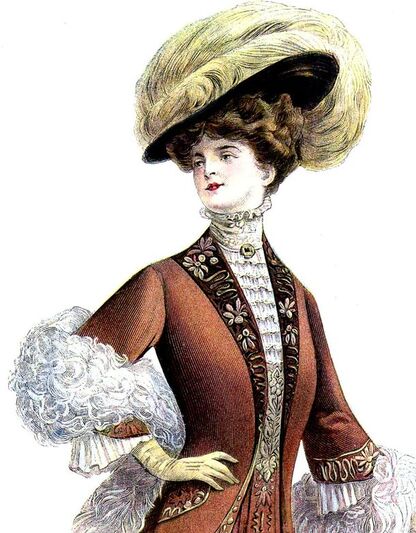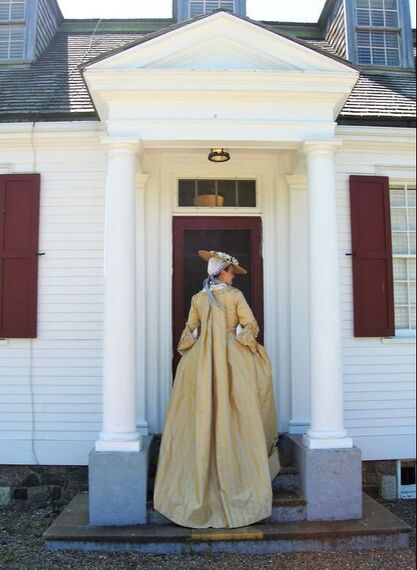|
If one element of women's fashion defined formal daytime elegance during the Edwardian era, it was the high, fitted, boned collar. Unlike their rigid, often plain, Victorian predecessors, the Edwardian boned collar was usually a thing of delicacy and charm, made of fine materials such as lace, chiffon, silk net, or lightweight linen, boned in narrow whalebone, featherbone, or (later) fine zig-zag wires. I've seen all these types in both museum examples and in pieces in my own collection of antique garments, although I have not seen steel bones of any kind used in Edwardian collars. Being able to construct one of these iconic period collars is a key part of creating an ensemble that reflects the time period accurately. I see many sewists struggling with this aspect of historical construction, and am hoping my insight and experience can help! (Please click on "Read More" at right, to see the full tutorial)
1 Comment
One question that comes up frequently in online historical costuming discussions is that of how much fabric would be needed to cut a particular type of gown, or else how best to make use of available yardage. This was certainly a serious question in the 18th century, when the high cost of materials (particularly silk) meant that an effort was made to use every possible scrap of fabric to best advantage in constructing a gown. This is revealed in the many ways in which garments -- particularly silk ones -- were cleverly pieced. In this article I'd like to focus on the problem of estimating yardage for a typical robe à la française (known in English as a "sacque" or "sack" gown. (Click on "Read More", lower right, to continue)
|
AuthorPatricia Preston ('The Fashion Archaeologist'), Linguist, historian, translator, pattern-maker, former museum professional, and lover of all things costume history. Categories
All
Timeline
March 2024
|



 RSS Feed
RSS Feed